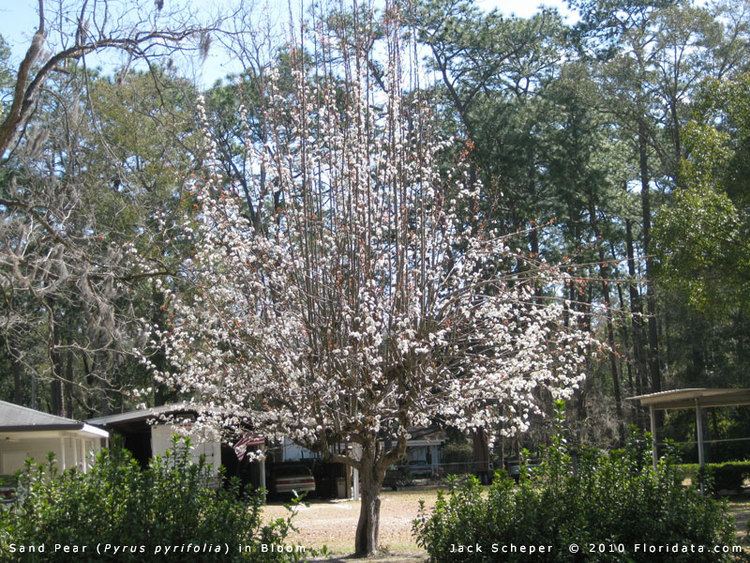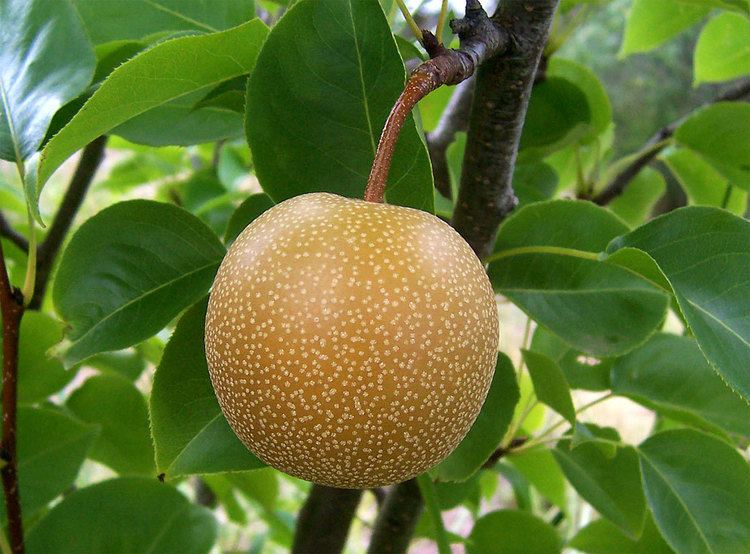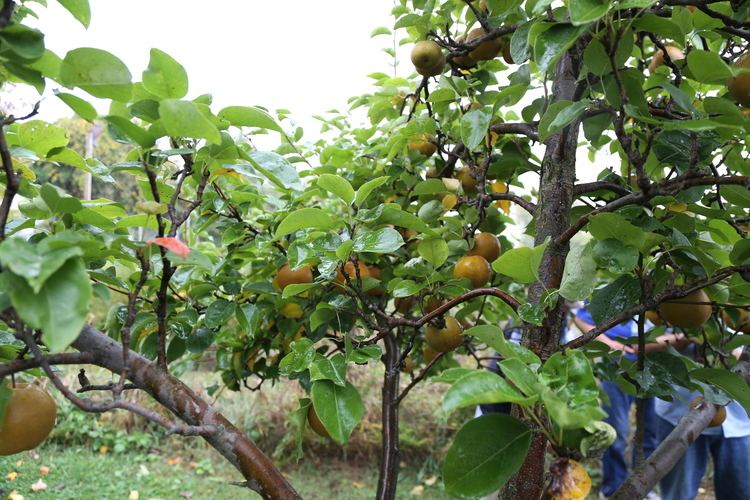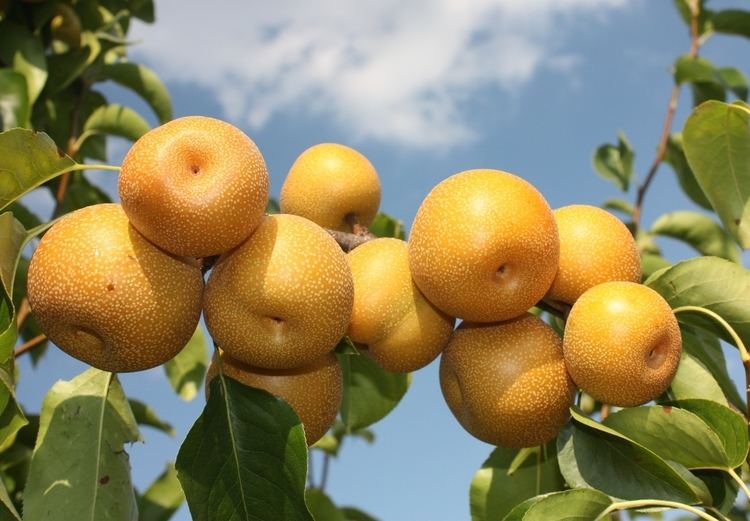Kingdom Plantae Family Rosaceae Scientific name Pyrus pyrifolia Rank Species | Order Rosales Genus Pyrus Higher classification Pear | |
 | ||
Similar Pear, European pear, Apple, Peach, Quince | ||
Chinese pear pyrus pyrifolia san diego california
Pyrus pyrifolia is a species of pear tree native to East Asia.
Contents
- Chinese pear pyrus pyrifolia san diego california
- flower to fruit asian pear tree development 2015 pyrus pyrifolia nashi pear
- Culture
- Cultivars
- References
The tree's edible fruit is known by many names, including: Asian pear, Chinese pear, Korean pear, Japanese pear, Taiwanese pear, and sand pear. Along with cultivars of P. × bretschneideri and P. ussuriensis, the fruit is also called the nashi pear. Cultivars derived from Pyrus pyrifolia are grown throughout East Asia, and in other countries such as India, Australia, New Zealand, and the United States (e.g., California). Traditionally in East Asia the tree's flowers are a popular symbol of early spring, and it is a common sight in gardens and the countryside.

The fruits are not generally baked in pies or made into jams because they have a high water content and a crisp, grainy texture, very different from the European varieties. They are commonly served raw and peeled. The fruit tends to be quite large and fragrant, and when carefully wrapped (it has a tendency to bruise because of its juiciness), it can last for several weeks or more in a cold, dry place.

flower to fruit asian pear tree development 2015 pyrus pyrifolia nashi pear
Culture

Due to their relatively high price and the large size of the fruit of cultivars, the pears tend to be served to guests, given as gifts, or eaten together in a family setting.

In cooking, ground pears are used in vinegar- or soy sauce-based sauces as a sweetener, instead of sugar. They are also used when marinating meat, especially beef.

In Korea, the fruit is known as bae (배), and it is grown and consumed in great quantity. In the South Korean city of Naju, there is a museum called The Naju Pear Museum and Pear Orchard for Tourists (나주 배 박물관 및 배밭 관광체험).
In Australia, these pears have been commercially produced for more than 25 years.
In Japan, fruit is harvested in Chiba, Ibaraki, Tottori, Fukushima, Tochigi, Nagano, Niigata, Saitama and other prefectures, except Okinawa. Nashi (ja:梨) may be used as a late Autumn kigo, or “season word”, when writing haiku. Nashi no hana (ja:梨の花, pear flower) is also used as a kigo of spring. At least one city (Kamagaya-Shi, Chiba Prefecture) has the flowers of this tree as an official city flower.
In Nepal and the Himalayan states of India, they are called nashpati (नास्पाती) and more popularly known as Mara Sebu in Karnataka, and are cultivated as a cash crop in the Middle Hills between about 1,500 and 2,500 meters’ elevation where the climate is suitable. The fruit are carried to nearby markets by human porters or, increasingly, by truck, but not for long distances because they bruise easily.
In Taiwan, pears harvested in Japan have become luxurious presents since 1997 and their consumption has jumped.
In China, it is considered a social faux pas to share a pear with a friend or loved one. "Sharing a pear" (分梨) is a homophone of "separate" (分离).
In Cyprus, the pears were introduced in 2010 after initially being investigated as a new fruit crop for the island in the early 1990s. They are currently grown in Kyperounta.
Cultivars
Cultivars are classified in two groups. Most of the cultivars belong to the Akanashi ('Russet pears') group, and have yellowish-brown rinds. The Aonashi ('Green pears') have yellow-green rinds.
Important cultivars include:
